The automotive OEM that certifies EMC laboratories to carry out validation testing invested a lot of trust in accuracy and correctness of so called "sign-off" reports. This "sign-off test results" or "not for sign-off test results" statement maybe an excuse for skipping a full review if the summary looks clean.
The automotive electronic device supplier must always verify in detail the report to clarify each reported non-conformance. Otherwise it may adversely affect the entire validation process through endless testing to fix potential false issues.
The sample of bad report shown below may easily go undetected by those searching for easy resolutions (pass / fail).
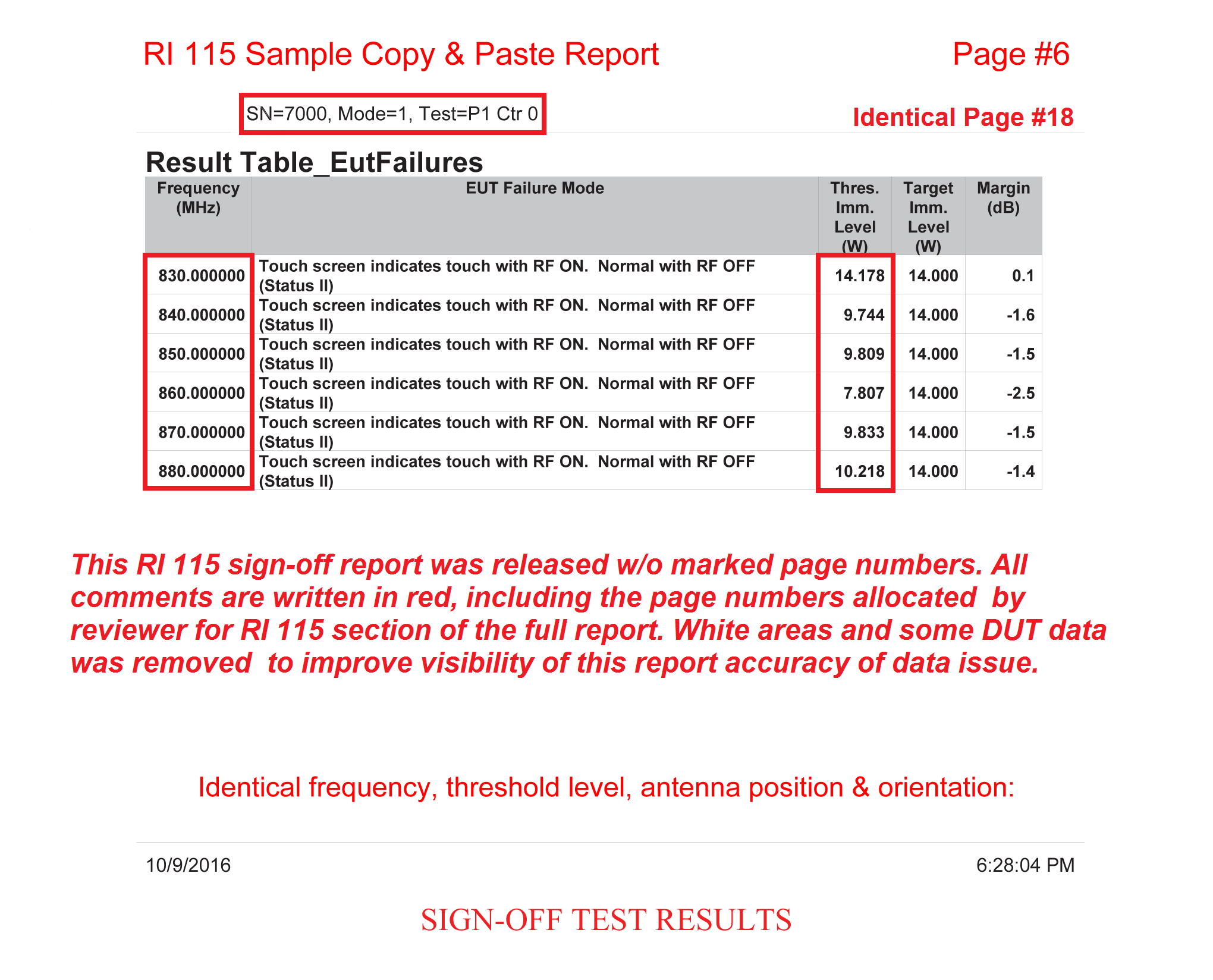
In tis particular case two samples (7000 & 7002) are being evaluated for near filed interferences from portable transmitters.
The requirement for DUT in question is to pass Level 1 in band#9 (no deviation allowed under 7 Watts). The testing is carried out at 14 Watts, which is the Level 2 Severity. Whenever a deviation occurs the test operator must threshold the lowest severity level where the problem goes away.
The issue with the above result is that the same severity level threshold result was copied from one sample to another (7002 to 7000). It is impossible to have identical 3-digit accuracy readings between two test samples for the same antenna position and orientation. In fact, considering the uncertainty of test equipment combined with HW/SW tolerances of DUT it is impossible if scanning the same sample twice. The test result data file is generated automatically by the software running the test equipment. Chances to be a copy and paste mistake are zero.
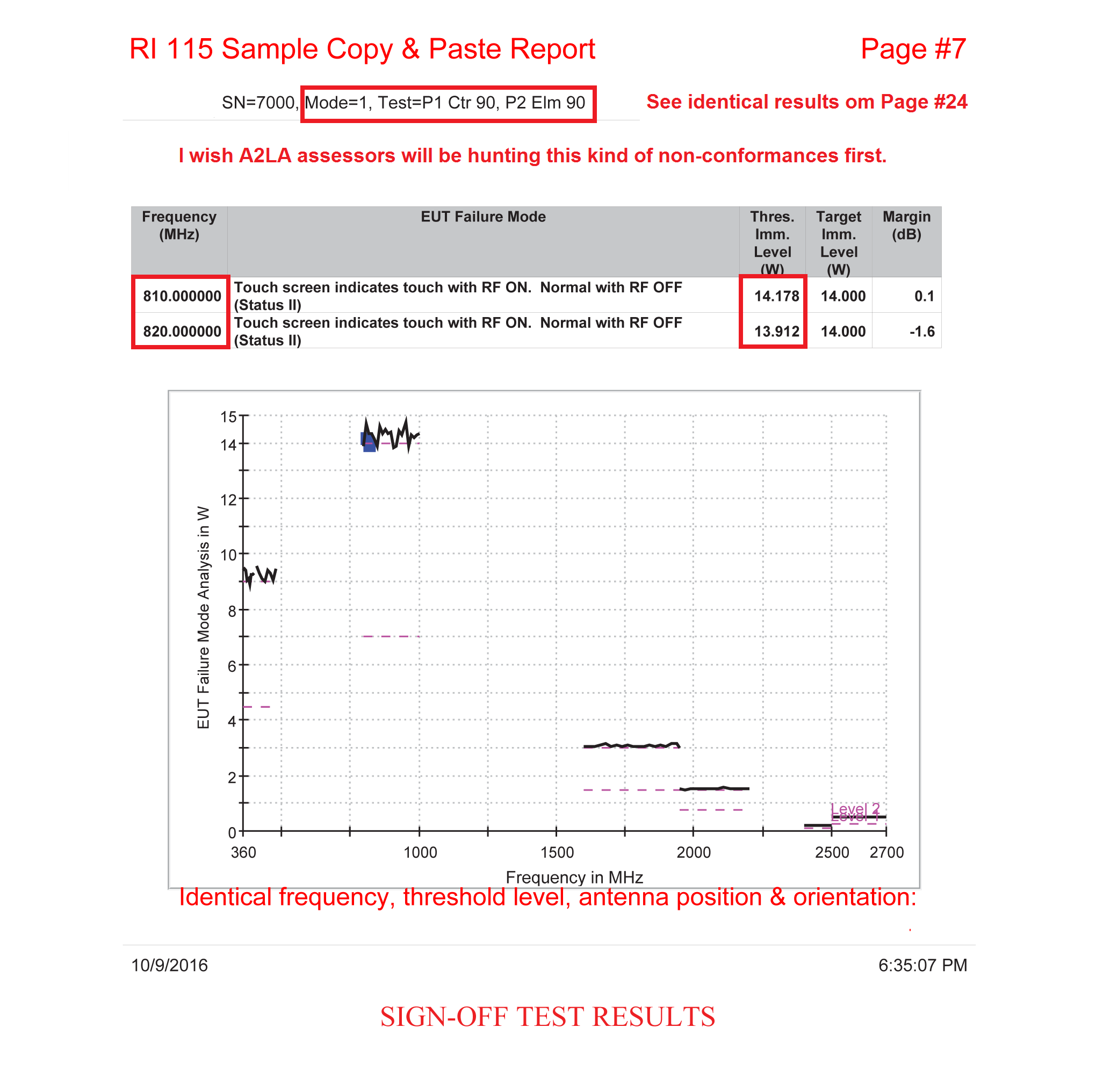
Looking over page's date/time the scan below was generated before the scan above. However the order of pages is as was listed in the full report.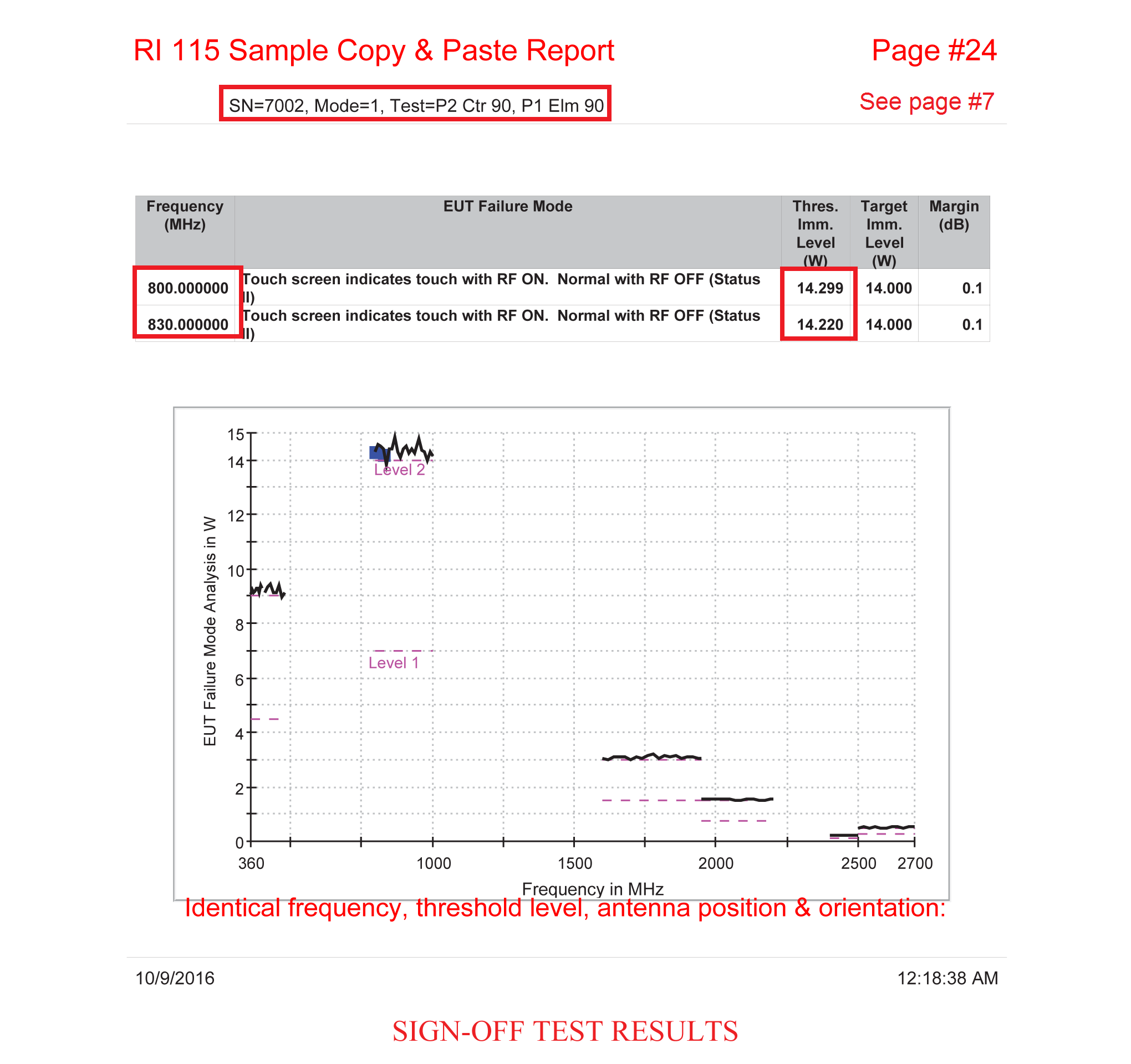
The test operator was in rush missing to change the test sample number from 7002 to 7000. Page #9 was supposed to show results from sample #7000. For the failed frequency step (850 MHz) the test operator slightly changed the Level 1 threshold value on the second tested sample (from 6.058 to 6.15 Watts) leaving unchanged the level 2 threshold values for all other frequencies. Looking closely to date/time stamps they also are identical on both pages. Is this a honest mistake?

This kind of precision in measurements would humiliate any theory so far.

The perfect DUT type ever, perfect RI 115 equipment, perfect test operator, perfect identical hand portable transmitters immunity!
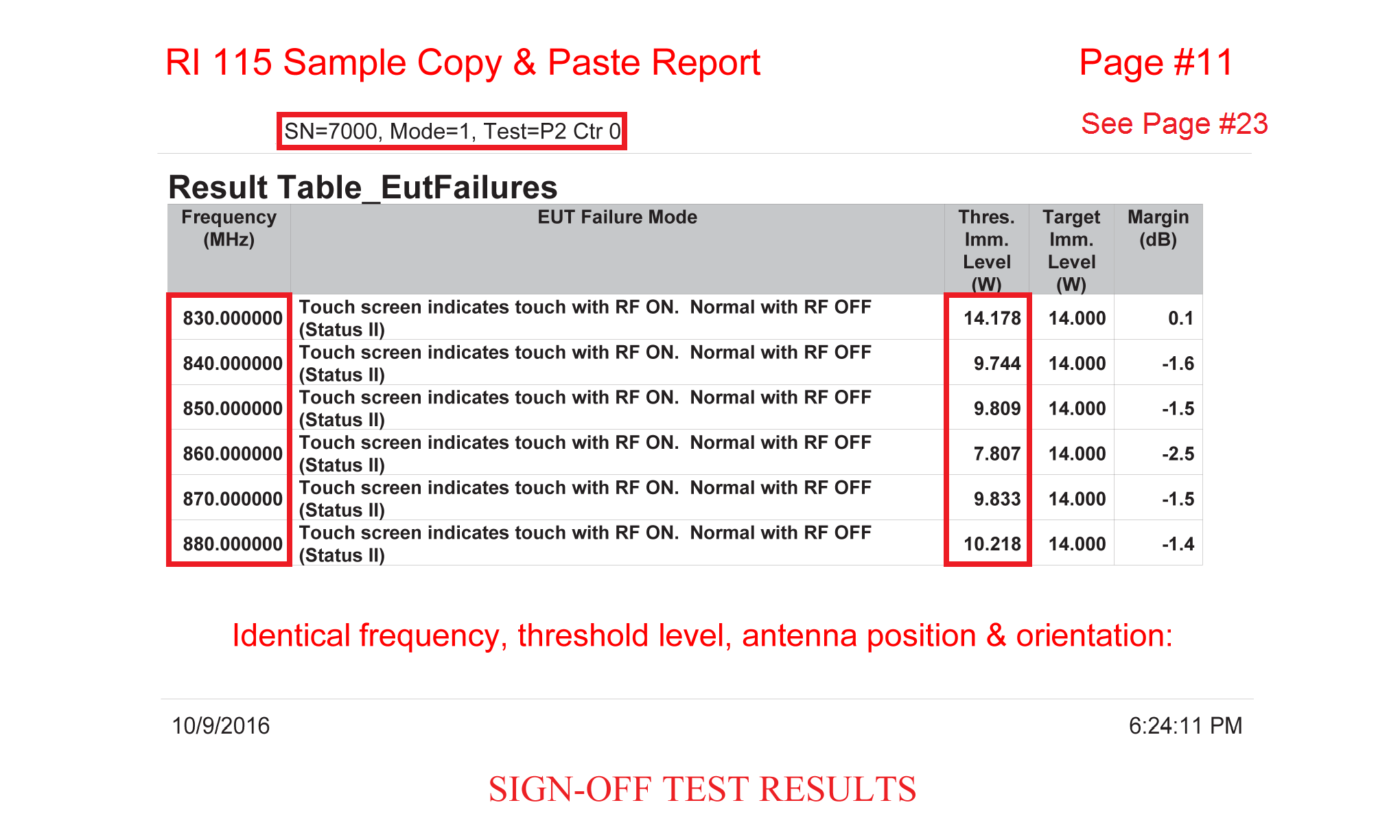
Going over pages's date/time they both have the same stamp. Theb why inserting them such that they apear to belong to separate test samples?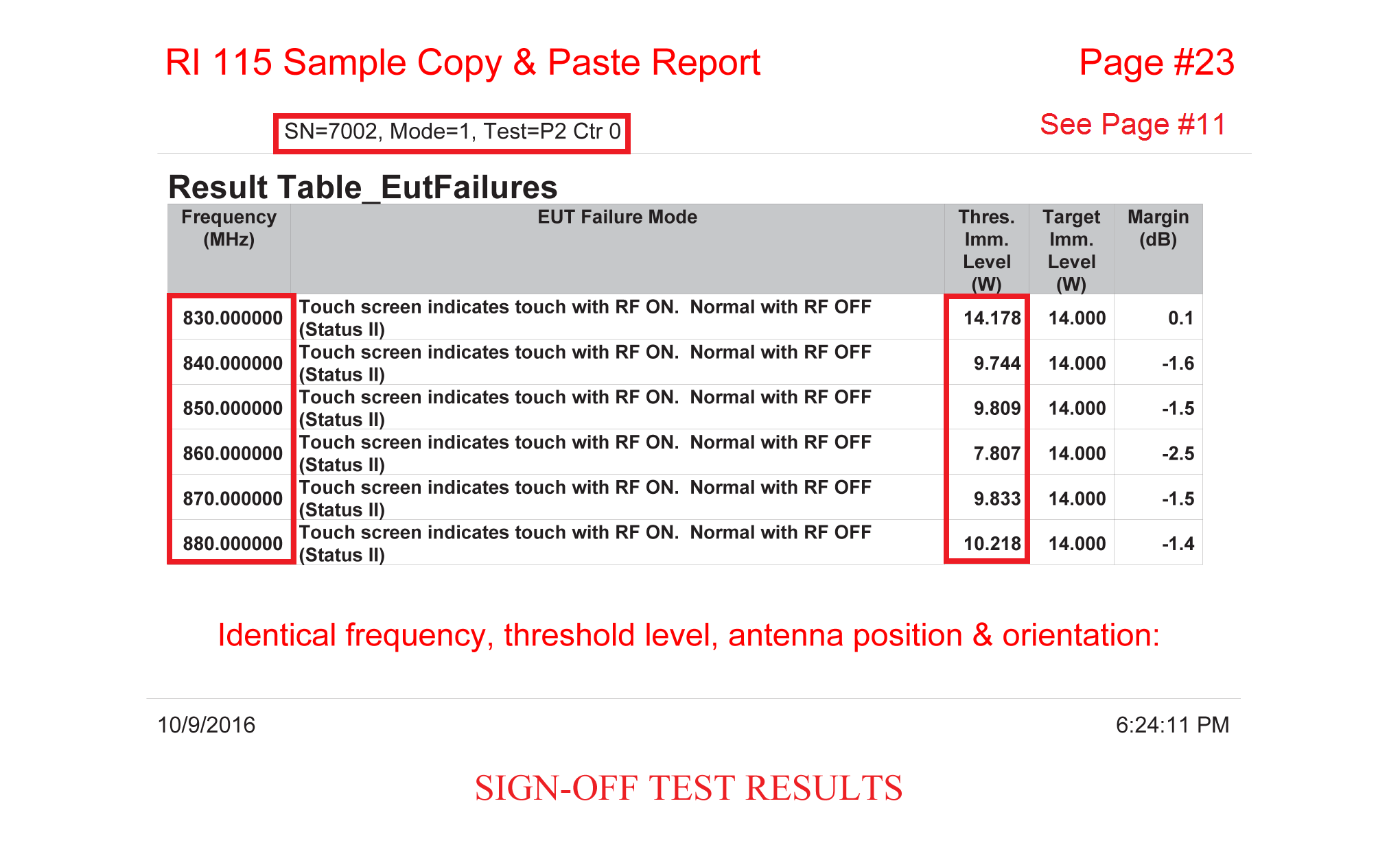
Surprisingly, but there is an antenna position where the result was either correctly tested or correctly represented.

This was the only instance where the RI 115 result from one sample was not copied over the for the other sample.

The RI 115 make up report saga continues. As long as the customer is preoccupied by the deviation in Level 1 it will never pay attention that only one sample was fully tested. The really bad part is that the designer will believe there is some sort of stability in DUT's behavior when in fact it was a huge instability.
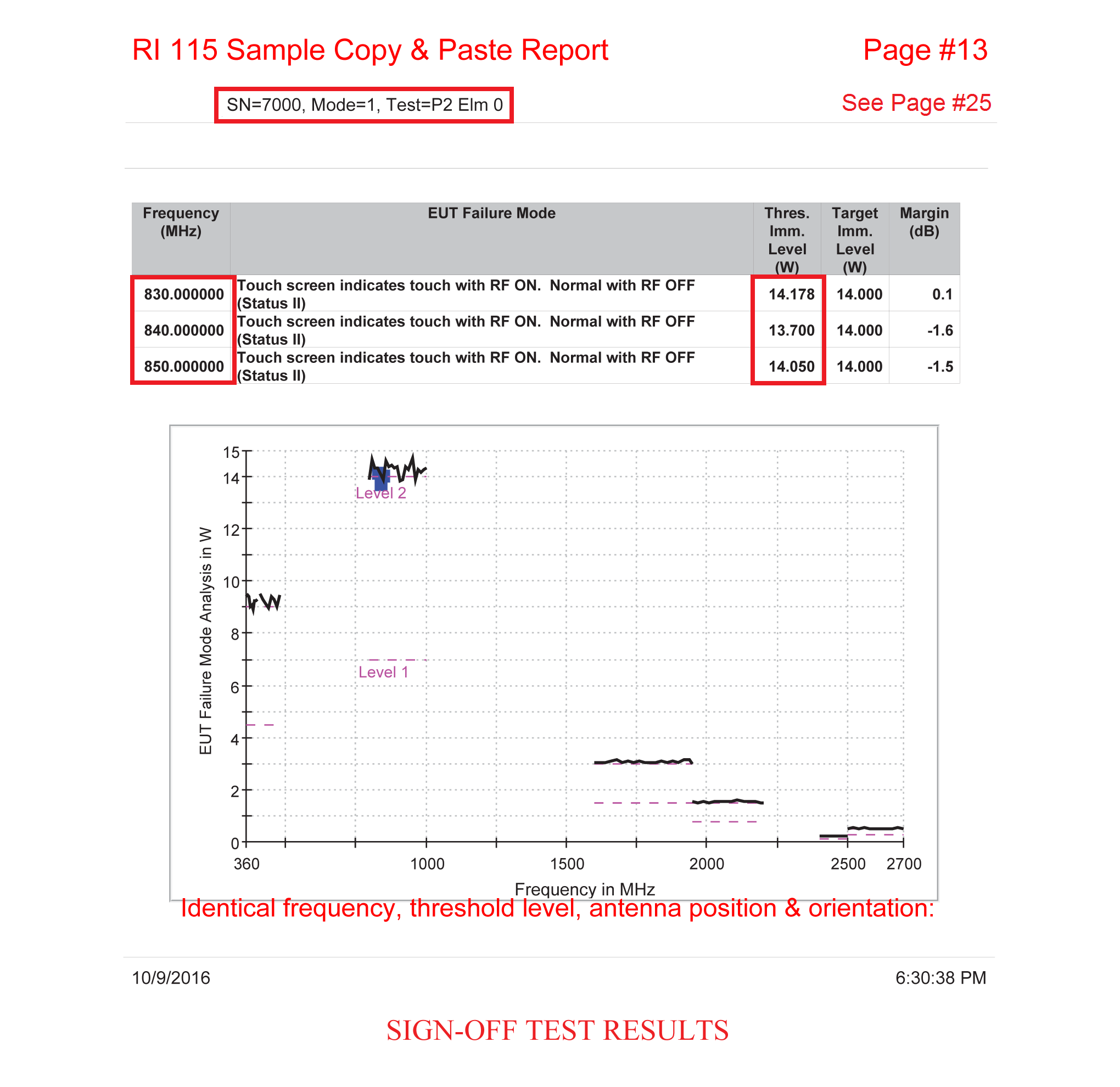
Again same date/time stamp but different test sample numbers. How was this possible?
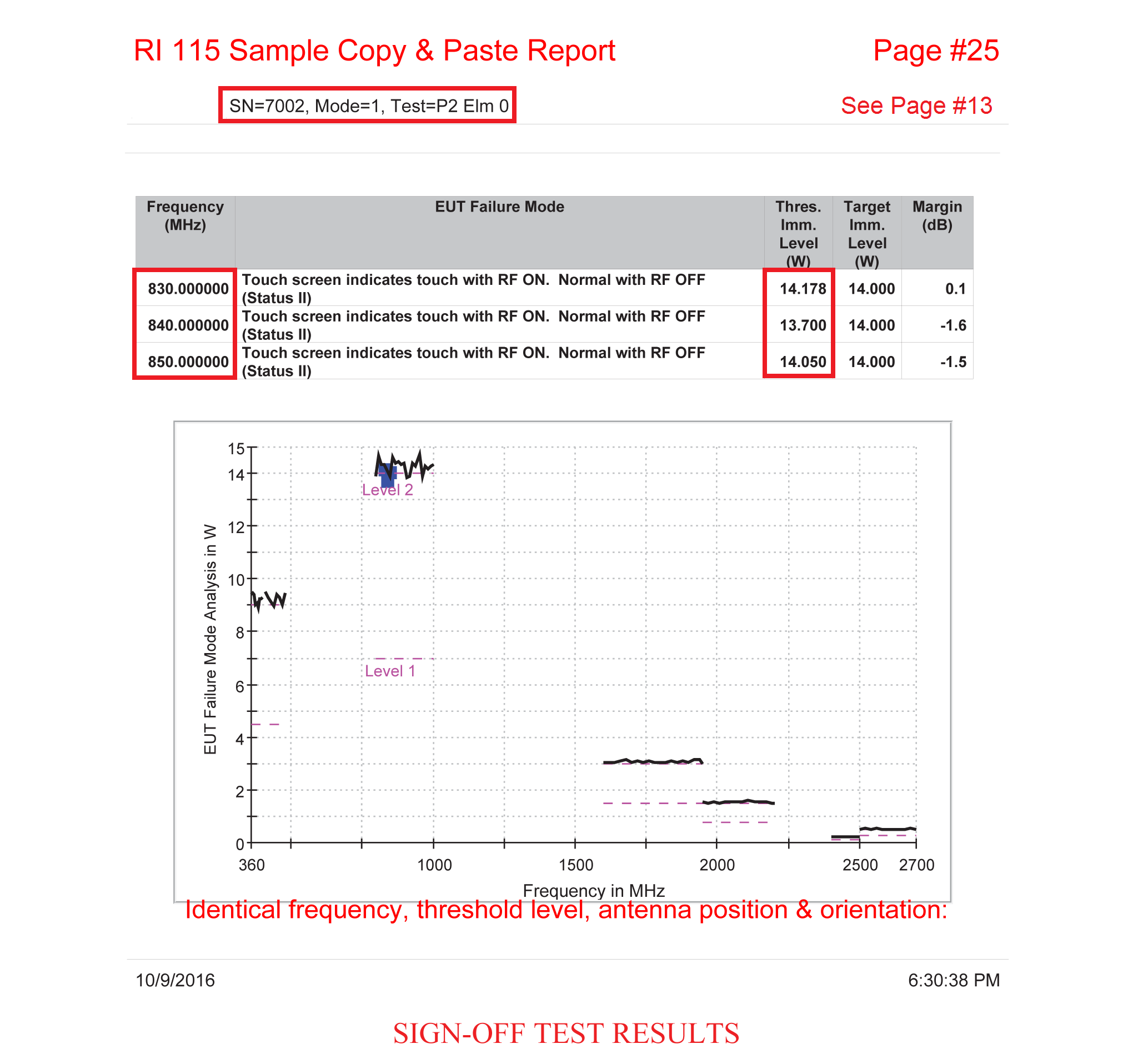
Christian Rosu
Trialon EMC Laboratory, Burton, MI
Igor Klivak